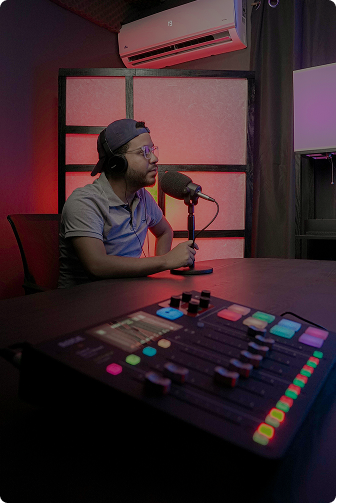Advancing and enhancing the world of surgery: an interview with Matt Archer
Advancing and enhancing the world of surgery: an interview with Matt Archer
.png)
In this interview, we speak with Matt Archer about the current and future roles that technology will play within surgery. Matt provides his perspective on how technology will enhance surgical techniques and how the responsibility of surgeons will change alongside these advances.
What is the current role of technology in surgery?
Technology has always been there in surgery. Since the very beginning, surgery has naturally lent itself to innovation for the benefit of both the patients and the surgeon. From rudimental advancements that we may not consider 'technology', such as surgical instruments, to more obvious candidates such as the use of lasers and video assisted surgery, technology has always moved in line with surgical techniques as well as patient expectations. In today’s world, the word disruption is often used in parallel with innovation and yet when it comes to an individual’s health there has to be a large, and warranted, level of caution and skepticism around any new advancements with the highest level of rigor and validation. I was recently reading a paper first published in 1999, authored by Satava based at Yale University (CT, USA) , looking at the current state of technology at the time within surgery and what was being touted as the future. There were a significant number of ideas that are now seen as standard but with some advancements, and a number of parallel themes still being discussed today as the future despite the passing of 20 plus years. This paper discussed laparoscopic surgery, three-dimensional reconstruction based on cross sectional imaging, such as CT and MRI scans, for optimal surgical planning, and also discussed the use of distant based surgery. Satava also placed heavy emphasis on how all of this would be incorporated into medical education and the place of simulation supplementing education.
The current role of technology in surgery is dependent on specialty but is evident everywhere in the operating room. Minimally-invasive surgery such as laparoscopic surgery has advanced staggering amounts since the first pioneering 'laparoscopy' performed by over 100 years ago, and revolutionized in the 1980s by advancements in cameras for both endoscopy and laparoscopy. It was in 1983 that German surgeon Semm performed the first laparoscopic appendicectomy, at the time criticized, and yet all of this is a daily part of any hospital. Both laparoscopic and endoscopic surgery utilize the cutting edge displays and camera quality available. The improvement in visual equipment combined with the sustained advancement in engineering have allowed robotics to be a mainstay of a large number of hospitals. Although still a long path ahead in becoming the most common type of surgical technique, currently behind open and laparoscopy, robotics are a common sight seen in hospitals. Whilst on the topic of visual equipment, these advancements combined with the improved speeds and reliability of internet connections have also paved the way more recently for telesurgery. A host of companies and content is now available as we see the globalization of healthcare.
Elsewhere we can look at implants and prosthesis, both a potentially overlooked area of significant advancements and yet so common within surgery. This is a wide-ranging spectrum encompassing everything from bio-tissue matrixes all the way through to plates and joint replacements. With these we can also look at the assistance of computer aided design and robotics for surgical planning as another commonly seen technology. Along these lines other common sites are both three-dimensional printing and three-dimensional reconstruction in a number of specialties, and an ever important need to provide the highest level of care and precision required.
What do you see the future of surgery looking like and the role technology will play in that
I will be concise and mention certain technologies without going into masses of detail. A number of them we have already discussed and notably robotics; robotics will continue to grow. They have already been in operating rooms for 20 plus years, currently all are fully controlled by a surgeon, but the role of the robot is to enhance the operation by allowing the same operation with fewer or smaller incisions, greater dexterity, enhanced stability, three-dimensional vision and precision with four arms not two. Going forward though I think there are untapped advantages, by integrating what the operator i.e. the surgeon does, and then analyzing those motions and eventually what the outcome was for the patient. Being able to analyze the input to the procedure and the subsequent output will also allow us to transform robotics in the coming years, to transition robotics into possessing the capability of performing full autonomous operations. Of course, this shall require extreme consideration as to the acceptance of this, with respect to patients and also accountability. Linking in with this area of robotics will be that of live diagnostics, such as smart knives, to identify specific structures in real time and analyze smoke vapor to detect tissue that is malignant.
Virtual reality (VR) and augmented reality (AR) are big players currently, and at the beginning of their adoption, in many ways as mainstream within healthcare. Although not very novel technology in many ways, if we look at Professor Shafi Ahmed (Royal Hospital London, UK), he utilized VR back in 2016 for an operation, however, the use of VR and AR for education, simulation and a fully immersive experience for those operating has made huge strides recently and the use will only increase. For some, the full use cases of operating with AR still need to be determined, but I think both VR and AR are prime examples of using technology for the benefit of education, to reconstruct a real simulation of how a patient might present, or how to perform an operation, or how to simulate dealing with unexpected events.
Another potentially less obvious use of technology is what we might term patient facing technology. This is a broad category of technology all about involving the patient and empowering them with their own health and patient journey. This technology is also helping with the changing shift in how we view health and hospitals as well as the change in demand and supply of hospital beds. Examples of patient facing technology can range from simple telemedicine pre-operatives, through to post-operative remote patient monitoring via wearables and smart devices, feeding real time information into analyzed platforms able to detect subtle changes and alert both patients and health professionals that someone may need further consideration. There are already a number of companies out there pioneering virtual wards and changing the definition of enhanced recovery. There is definitely more potential in this area to enhance the full patient experience. From pre-operative education tailored to the patient’s condition, incorporating digital consent, as a number of companies like Concentric (London, UK) are driving forward, and then the ability to track the countdown to the operation and using this time for full surgical preparation.
AI and data are buzz words at the moment in all aspects of the world and medicine and surgery are no exception, both data and genomics will be integral to change within medicine and surgery. Data will link in with all aspects of the surgical journey from pre-operative, to intra-operative as mentioned above, through to post-operative as discussed in the monitoring of patients. Analysis of this data will change treatment options for individuals and once combined with genomics, will be the ultimate personalized medicine. It will be interesting to see how AI, and all subsets of AI, will change the full landscape of medicine and whether the demand will decrease for surgery because of a change in disease prevention, or whether it will increase for risk-reducing surgery.
Do you still see a need for humans or surgeons if there are such advancements?
Absolutely, at least for the foreseeable future we will still need humans. Certainly, if we look over the coming years, we should not see advancements as a pure replacement but as an adjunct for improvement in all aspects of care. There will be challenges, but the human aspect of care is certainly still required. The role of a surgeon will change and greater emphasis will be placed upon the provision of pre- and post-operative aspects of care that patients will require. A Mckinsey report in 2018 stated health and education are the area’s most in need of continued human representation and I think this still rings true today and for upcoming years.
What are those challenges that you mentioned and how will we see a change in the role of a surgeon?
The challenges are standard across healthcare when it comes to innovation and change. In my opinion safety for the patient and education for the healthcare professional pose the greatest challenges, along with the allocation of these resources and the ever-changing landscape of the workforce and how technology can intersect with the future workforce. Of course, like everything in medicine and surgery, the medication, the implants and the robotics all have to be held to high standards, some obviously need to go through full clinical validation but all have to prove they work for the purpose intended.
Looking at all of this, for the benefit of both the patient and the surgeon, education and embedding all technology into the curriculum is of paramount importance. Patient expectations are, rightly so, that the surgeons are capable of using this technology and yet not all of it can be fully encompassed into the training pathway and continued practice of self-development. Some are due to the pure pace of technology, or limited access, and some are due to a geographical restriction. Yet the answer could also lie in technology: the idea of a hybrid teaching model, using virtual reality and augmented reality as well as the remote surgery, may allow for the optimal outcome. The challenge of keeping up with the pace of change will become an ever-burdening aspect of wider society as we live through the information age. This will require a certain level of acceptance in flexibility and adaptability within the workforce of tomorrow, and yet it will also be vital that technology complements expectations as we enter a new era and opinion on work and life. There also needs to be great consideration as to the allocation of these resources.
Despite these, I am optimistic that technology will bring progress, as we see a change in what we know surgery to be. Surgeons themselves will become multifaceted and well versed in new verticals within health. Meanwhile surgery itself will become more transparent with higher standardization amongst individuals and improved outcomes.
Interviewee Profile:

My background is as a clinician, spending the last few years training in surgery, in particular Oral and Maxillofacial Surgery. From a non-clinical aspect, I have been working commercially with a multitude of health tech companies. These have varied from providing clinical operations expertise and medical advice to start ups. Most recently, alongside clinical commitments, I have been working on implementing lean principles and novel innovation to the surgical landscape in order to increase efficiencies, reduce barriers to providing patient care and improve patient outcomes by redesigning processes. I am working in the accounts and operations side. Outside of my work I am well published in a variety of subjects at an international level, as well as working as a peer reviewer for a number of journals, and recently I have been involved in the Royal College of Surgeons Innovation Hub.
Disclaimers:
Matt Archer has no disclaimers to declare.
The opinions expressed in this feature are those of the interviewee/author and do not necessarily reflect the views of Future Medicine AI Hub or Future Science Group.
.png)
.png)
.png)



